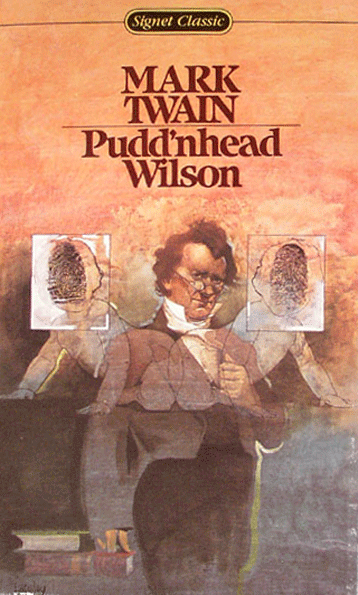Mark Twain's Pudd'nhead Wilson demonstrates how technologies of identification attempt to counter how bodies evolve beyond previous constraint. The most important usage of this technology is dealing with racial classification through finger printing. Twain develops accounts of subjectivity and racial classification that cover an extraordinary breadth of genealogy, biology, and law. However, because of this time period and the technology they had, sometimes elements such as randomness and chance come into play when identifying an individual. The key to such combinations of fixity and emergence in human identity is the technology of fingerprinting.
Twain was fully engaged with the fingerprinting system so he began creating a system and medium to classify and secure particular forms of identity, leading to the reassertion of racial values already inherent in science and technology, law, and commerce. Fingerprinting represents the direction that technologies of identity would seek to employ: getting away from direct visual observations of someone’s body (facial recognition, height, weight, etc.). The reason for this is because over time, these parts of the human body are constantly changing and altering ones identification. With a finger print, Twain was able to correctly identify who was who due to the fact that everyone has a different fingerprint.
According to Cynthia A. Current, of North Carolina University, “Fingerprinting, then, is not simply a “[fact] of literature within Pudd’nhead Wilson; instead, fingerprinting becomes, as genre theorist Yury Tyanov notes, a “literary [fact],” an element of genre development that allows Twain to particularly frame biotechnological and representational practices, and leads toward a Bakhtinian sense of the “novelization” of biology and training inthis text.”
Technology in Pudd'n'head Wilson

